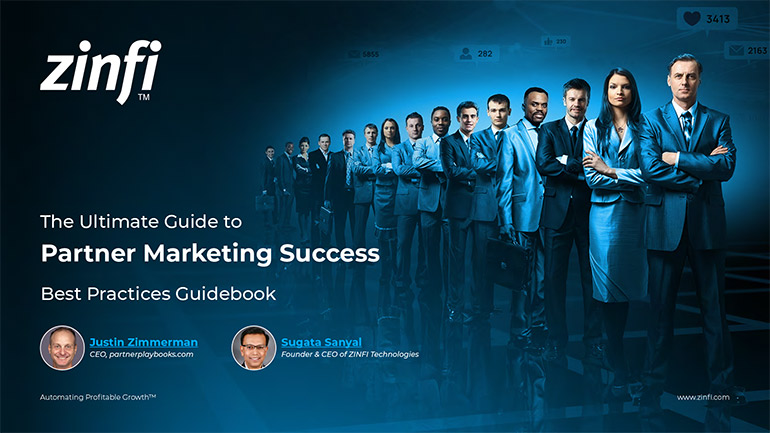Best Practices Articles

Essential SaaS Security Strategies for Today’s Cloud-Driven World
In today’s digital landscape, businesses increasingly rely on Software as a Service (SaaS) platforms to streamline operations, drive efficiency, and promote innovation. These cloud-based applications have become indispensable across industries, offering a flexible, scalable alternative to traditional software. However, with this rise in cloud adoption comes a new set of security challenges that organizations must address. SaaS Security is no longer optional; it’s critical to any enterprise’s overall security posture.
Companies migrating to the cloud face unique risks, such as misconfigurations, unauthorized access, and third-party vulnerabilities. Moreover, the decentralized nature of cloud platforms can lead to fragmented security efforts, leaving gaps that malicious actors are quick to exploit. This article explores the essential strategies businesses must adopt to secure their SaaS environments. From managing complex configurations to building a long-term security program, these approaches are designed to protect enterprise data and maintain trust in an increasingly connected world.
The Evolution of Security from Physical to Cloud
The evolution of enterprise security is a tale of two eras: one rooted in physical infrastructure and the other driven by the cloud. In the early days of IT, security primarily fortified on-premise servers and hardware-based firewalls. Organizations invested heavily in physical equipment to create an impregnable barrier against outside threats. This approach worked well in a world where most business operations occurred within the confines of a company’s data center.
However, the rise of cloud computing—specifically, SaaS has upended traditional security models. Today, businesses don’t just rely on in-house infrastructure; they depend on third-party providers to deliver mission-critical applications via the cloud. With this shift, the focus of security has moved from the physical to the virtual, from guarding hardware to protecting data distributed across multiple cloud environments.
This transition presents both opportunities and challenges. On the one hand, SaaS platforms offer unprecedented flexibility and scalability, enabling organizations to adapt quickly to changing business needs. On the other hand, losing direct control over infrastructure introduces new vulnerabilities. Enterprises must trust their SaaS providers to maintain robust security, but they also bear responsibility for securing their data within these platforms. This is where SaaS Security comes into play—ensuring that cloud-based applications are configured correctly, monitored continuously, and protected against various threats.
Simplifying SaaS Security: Core or Complementary?
One of the challenges that organizations face when implementing SaaS Security is understanding where security solutions fit within their overall strategy. SaaS platforms come in many forms, and security requirements can vary significantly depending on their use.
SaaS Security is the cornerstone of some businesses' entire security framework. Securing cloud applications like Salesforce or Microsoft 365 is mission-critical in these cases. These organizations view their SaaS Security solution as the “burger”—the main course that forms the foundation of their security approach. For these companies, investing in a comprehensive, proactive SaaS Security strategy is essential to ensuring the safety of sensitive data.
In other scenarios, SaaS Security is more like the “fries”—a complementary solution that works with other security systems. For larger enterprises with multiple layers of security, SaaS Security might play a supporting role, providing additional protection for specific cloud environments. SaaS Security must integrate seamlessly with existing systems to enhance the overall security posture in these cases.
The key takeaway here is that SaaS Security is not a one-size-fits-all solution. Each organization must assess its unique security needs and determine whether SaaS Security should play a central or supporting role. In either case, having a flexible, adaptable security solution is critical to addressing the constantly evolving threat landscape.

Managing Complexity in Large SaaS Environments
Large enterprises often face unique challenges regarding SaaS Security, particularly those operating in complex, multi-cloud environments. Managing hundreds or even thousands of SaaS applications can be overwhelming, as each has its security settings, user access controls, and third-party integrations. The sheer volume of these configurations introduces a significant risk, as even a single misconfiguration could open the door to a data breach.
For example, consider an enterprise using over 200 separate instances of Salesforce, each tailored to meet the specific needs of different departments or business units. While this level of customization allows the company to optimize its operations, it also creates a significant security challenge. Monitoring and securing each instance individually is time-consuming and prone to human error.
The solution to this problem lies in centralization. A centralized security platform allows organizations to gain visibility into all their SaaS applications, providing a unified view of security settings, access permissions, and potential vulnerabilities. By consolidating security management, companies can ensure that all SaaS instances are consistently protected, minimizing the risk of a breach.
Additionally, continuous monitoring plays a vital role in securing large SaaS environments. Given the dynamic nature of cloud platforms, where settings can change daily or even hourly, organizations must be vigilant in tracking changes and identifying potential threats. Automated alerts and real-time analytics are essential for an effective SaaS Security strategy.
The COVID-Driven Surge in SaaS Security Needs
The COVID-19 pandemic accelerated digital transformation at a pace few could have predicted. As organizations around the globe shifted to remote work, they turned to SaaS platforms to keep their businesses running smoothly. Microsoft 365, Zoom, Salesforce, and other cloud-based applications became lifelines for communication, collaboration, and data management.
However, with this rapid adoption came a surge in security vulnerabilities. Many companies that had previously operated primarily on-premise found themselves scrambling to implement SaaS Security measures. The sudden shift to remote work created new challenges, including managing user access outside the corporate network, securing third-party integrations, and ensuring compliance with data protection regulations.
The pandemic underscored the importance of proactive SaaS Security. Instead of waiting for incidents to occur, businesses needed to take immediate action to secure their cloud environments. This meant implementing Multi-Factor Authentication (MFA), conducting thorough risk assessments, and monitoring user activity for any signs of suspicious behavior.
Furthermore, the rise of remote work highlighted the need for continuous security updates. SaaS platforms constantly evolve, with new features, integrations, and updates rolled out regularly. Without a system to monitor these changes, businesses risk falling behind on their security efforts. As the world adapts to a post-pandemic reality, the lessons learned during COVID-19 will remain relevant for years. SaaS Security will be a top priority for organizations looking to maintain a safe and secure cloud environment.
Influence, Land, and Expand: A Strategic Approach to SaaS Security
Securing a SaaS Security solution requires a strategic, phased approach to ensure successful implementation and ongoing protection. One such strategy involves the steps of Influence, Land, and Expansion, allowing businesses to introduce and scale their security efforts gradually.
The first step, Influence, focuses on educating decision-makers about the importance of SaaS Security. Many organizations are still unaware of the full extent of the risks posed by cloud applications. Through targeted awareness campaigns, training sessions, and risk assessments, security teams can influence stakeholders to take action and invest in comprehensive SaaS Security solutions.
Once stakeholders are on board, the next phase is Land. This phase typically involves a proof of concept (POC) or pilot project in which the SaaS Security solution is implemented for one or two key applications. This allows the business to test the solution in a controlled environment and demonstrate its effectiveness before rolling it out across the entire organization. Security teams work closely with vendors and service providers during the Land phase to ensure the solution meets the company’s needs.
The final step is Expanding. After a successful pilot, the SaaS Security solution can be scaled across additional applications and departments. This phase may also expand the solution to third-party integrations and external partners. By taking a phased approach, organizations can ensure that their SaaS Security strategy is fully integrated and adaptable to their evolving needs.
Building a Comprehensive SaaS Security Program
Building a comprehensive SaaS Security program goes beyond simply implementing a set of tools—it requires a holistic approach that involves continuous monitoring, regular assessments, and proactive threat detection. Unlike traditional security models, SaaS Security is highly dynamic, with cloud environments constantly evolving and introducing new risks.
A vital component of a successful SaaS Security program is governance. Each department within an organization plays a role in maintaining security, and clear lines of communication between teams are essential. IT and security teams must collaborate closely with business units to consistently apply security policies across all SaaS platforms. Additionally, security leaders must establish protocols for onboarding new applications, reviewing third-party integrations, and managing user access.
Regular risk assessments are also critical. SaaS platforms are often integrated with other cloud services and third-party applications, which can introduce security vulnerabilities. Organizations can identify and mitigate potential risks by conducting periodic assessments before they become serious threats. These assessments should include thoroughly reviewing configuration settings, access controls, and compliance with industry regulations.
Continuous monitoring is another cornerstone of a robust SaaS Security program. Cloud environments are highly dynamic, and security teams must monitor changes that could impact the organization’s security posture. Automated monitoring tools can provide real-time insights into user activity, flagging suspicious behavior or unauthorized access attempts.
Ultimately, a comprehensive SaaS Security program is an ongoing commitment. It requires regular updates, continuous education, and a proactive approach to staying ahead of emerging threats. By investing in a robust security program, organizations can ensure the safety and integrity of their data and applications in the cloud.
Conclusion
As businesses adopt cloud-based applications, SaaS Security has become a critical component of enterprise risk management. Whether managing complex multi-cloud environments or addressing the challenges of remote work, organizations must take proactive steps to secure their SaaS platforms. Companies can protect their sensitive data and ensure their cloud environments are secure by implementing a phased approach, conducting regular risk assessments, and building a comprehensive security program.
In an era where digital transformation is accelerating at an unprecedented pace, SaaS Security is no longer a luxury—it’s a necessity. As the threat landscape evolves, businesses must stay vigilant and adaptable, ensuring their security strategies grow alongside their technological capabilities. With the right tools and processes, organizations can safeguard their cloud environments and maintain trust in a connected, cloud-first world.
Guest Post by: Brandon Conley
Brandon Conley is the Chief Revenue Officer at AppOmni, a GTM leader with 25 years of consistent achievement for venture-backed startups and private equity-owned and publicly traded companies in the Cloud Security, Network Security, Mobility, and Identity Management markets.Brandon is an experienced Public Speaker, Analyst, and Media contact.
Best Practices Guidebook
 The Ultimate Guide to Partner Marketing Success Best Practices
The Ultimate Guide to Partner Marketing Success Best PracticesDownload Guide
 How to Start and Scale Partner Ecosystems Best Practices
How to Start and Scale Partner Ecosystems Best PracticesDownload Guide
 The Evolution of PartnerOps: Past, Present & Future Best Practices
The Evolution of PartnerOps: Past, Present & Future Best PracticesDownload Guide
 Mastering Channel Sales: Strategies, Best Practices, and Growth Tactics for 2025
Mastering Channel Sales: Strategies, Best Practices, and Growth Tactics for 2025Download Guide
 Winning with Partner Advisory Councils: Best Practices for Partner Engagement & Growth
Winning with Partner Advisory Councils: Best Practices for Partner Engagement & GrowthDownload Guide
 The Future of Partner Ecosystems Best Practices
The Future of Partner Ecosystems Best PracticesDownload Guide
 The AI Revolution: How Technology and Talent are Shaping the Future
The AI Revolution: How Technology and Talent are Shaping the FutureDownload Guide
 Top 105 Partner Management Metrics that Matter Best Practices
Top 105 Partner Management Metrics that Matter Best PracticesDownload Guide
 Mastering PRM Integration Best Practices
Mastering PRM Integration Best PracticesDownload Guide
 Building a Sales Partner Portal with Salesforce Best Practices
Building a Sales Partner Portal with Salesforce Best PracticesDownload Guide
 Building and Managing Partner Ecosystems Best Practices
Building and Managing Partner Ecosystems Best PracticesDownload Guide
 Mastering Co-Marketing and Co-Selling Best Practices
Mastering Co-Marketing and Co-Selling Best PracticesDownload Guide
 Transforming Partner Ecosystems Best Practices
Transforming Partner Ecosystems Best PracticesDownload Guide
 Mastering Partner Ecosystems Best Practices
Mastering Partner Ecosystems Best PracticesDownload Guide
 Mastering Partner Onboarding Best Practices
Mastering Partner Onboarding Best PracticesDownload Guide
 Partner Ecosystem Management Best Practices
Partner Ecosystem Management Best PracticesDownload Guide
 B2B Marketing in the Age of Intelligence Best Practices
B2B Marketing in the Age of Intelligence Best PracticesDownload Guide
 Multi-Partner Co-Selling Best Practices
Multi-Partner Co-Selling Best PracticesDownload Guide







